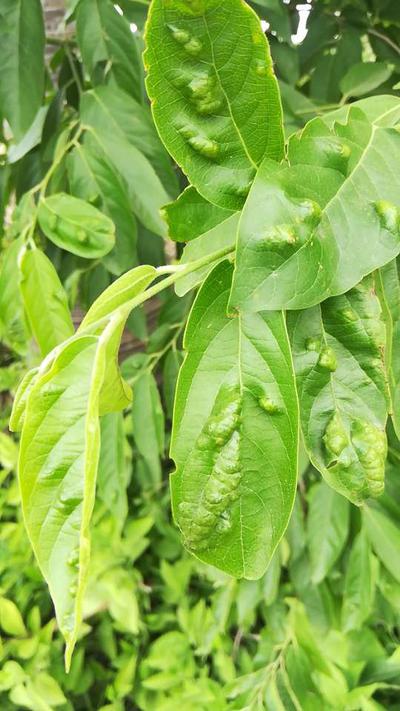Mango Bud Mite
Aceria mangiferae
Sâu bọ
Tóm lại
- Stunted growth.
- Die back of flower panicles.
- Malformation and leaf drop.
- Twiggy and stubby branches.
Cũng có thể được tìm thấy ở
Triệu chứng
Stunted and malformed buds, which cause leaf drop and stunted plant growths. This results in twiggy, stubby branches. Young trees are more susceptible to attacks. The mite usually occurs along with the pathogenic fungus Fusarium mangiferae. It can be transmitted between trees and possibly between tree parts by the mite, which enhances fungal penetration into the host via the feeding wounds.
Các khuyến nghị

Kiểm soát hữu cơ
Introduce/conserve phytoseiid predator (amblyseius swirskii). Apply sulfur dust or 10 pounds of wettable sulfur in 100 gallons of water can be effective. Also, the use of insecticidal soap and Akar 50 EC has proved to be effective in controlling the mite population.

Kiểm soát hóa học
Always consider an integrated approach with preventive measures together with biological treatments if available. Treat with pesticides containing acaricides which may reduce but may not eliminate the extent of the damage. Miticides can be applied at 2 weeks intervals.
Nguyên nhân gây bệnh
Damage is caused by the Bud Mite. The adult of the mango bud mite is microscopic, whitish, cylindrical in shape and about 0.20mm in length. It lives throughout the year within closed adventitive buds on the tree trunk and branches. during periods of population increase, they move into terminal buds. Bud mites reproduce by arrhenotoky(parthenogenesis is a form of asexual reproduction wherein the male offspring develops from an unfertilized egg), and the egg cycle takes 2-3 cycles in summer and twice as much in winter. Injury is commonly detected on the surface of the leaf in the winter months, leading in up to 30% lessening of photosynthetic action on leaves.
Biện pháp Phòng ngừa
- Cultivate resistant varieties such as Maya, Palmer, Keitt, and Kent, as they only sustain very small mite colonies.
- Prune affected twigs.
- Practice periodic inspections especially in the late winter months.
- Control measures should begin when the population reaches 6 or more mites per leaf.



